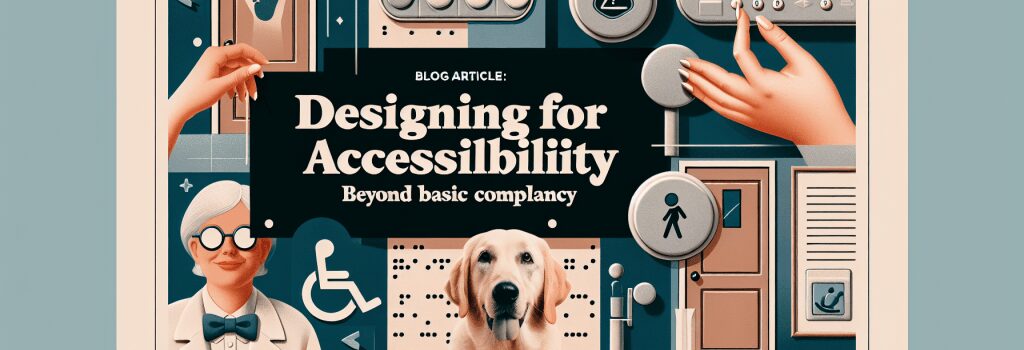Designing for Accessibility: Beyond Basic Compliance

Okay, here we go. Let’s start our journey into the world of accessibility, where we are not just checking boxes but breaking down barriers and paving roads towards inclusivity on the web. Buckle up, folks; this is going to be a ride you wouldn’t want to miss.
What Does Accessibility Actually Mean?
The term ‘Accessibility’ sounds like big, fancy jargon, doesn’t it? Well, it’s simpler than you think. It just means making your website usable for everyone, including people with disabilities or those using assistive technologies. It’s kind of like when you add ramps to buildings; it’s there for people who can’t use stairs. But here, we’re adding ramps to our websites. Cool, right?
Why Accessibility Is Important
So why should we care about accessibility? Well, because the Internet doesn’t belong to a select few. It belongs to everyone, and that includes those with hearing loss, vision impairment, and other forms of disabilities. Making your website accessible is like being a good host at a party; you want everyone to enjoy, not just those who can dance like John Travolta in Saturday Night Fever.
Understand the User’s Perspective
Understanding disabilities gives you insight into user behavior. Consider color blindness. Did you know about 4.5% of the population has some form of color vision deficiency? If you’re using color to convey critical information, those folks might not get the message. That’s kind of like telling a joke in a language nobody understands. Not much fun, eh?
Some Accessibility Quick Wins
1. Alt-texts for images: These are like life buoys for people who can’t see the images on your website. They provide a description of what’s in the picture. So, the next time you have a photo of a kitten playing with a yarn – don’t forget the alt-text.
2. Good color contrast: This one is a no-brainer. Always choose colors that contrast well so that people can actually read your text. It’s similar to wearing socks that match; it just makes life easier.
Embracing a Holistic Approach to Accessibility
Building a truly accessible website is not just about ticking off a list. It’s more about embracing a mindset where you’re constantly thinking about how to make your site better, easier, and more fun for everyone. Kind of like having a good sense of humor, it makes life (and the internet) better!
Now that we’re done, would you look at that – you my friend, have become a journeyman on the road to web accessibility. Keep exploring, keep learning, and remember, the Internet is a wild place, but let’s ensure it’s wild for everyone.
And next time you hear the word “Accessibility”, you’ll smirk and say, ‘Ah, we’re old pals.’


